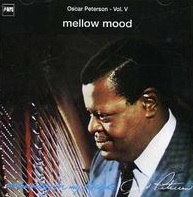Piano Sheets > Jimmy Smith Sheet Music > Mellow Mood (ver. 1) Piano Sheet
Mellow Mood (ver. 1) by Jimmy Smith - Piano Sheets and Free Sheet Music

About the Song
Mellow Mood is an album by jazz pianist Oscar Peterson and his trio, released in 1968 (see 1968 in music). It was reissued on CD in 2006 by MPS and in 2004 as part of the Exclusively for My Friends series. Jimmy Smith (December 8, 1925 [birth year is disputed and is often given as 1928] – February 8, 2005) was a jazz musician whose performances on the Hammond B-3 electric organ helped to popularize this instrument. In 2005, Smith was awarded the NEA Jazz Masters Award from the National Endowment for the Arts, the highest honors that the United States bestows upon jazz musicians.[1]
Born James Oscar Smith and originally a pianist, Smith switched to organ in 1953 after hearing Wild Bill Davis. He purchased his first Hammond organ, rented a warehouse to practice in and emerged after little more than a year with an exciting new sound which was to completely revolutionize the way in which the.
Download this sheet!
About the Artist

Random article
How to locate free sheet music easily If you want to learn how to play piano then having access to free sheet music can be an inexpensive and great way to learn! There are plenty of websites online, which offer you high quality sheet music free. Here are some ways you can locate these sources for your benefit.
The concept of free
If a site provides sheet music, which you can download and print without any infringement of copyright or violations then this is free sheet music. Some websites may have a prerequisite of attaining membership via subscriptions to newsletters or registering with an account. In order to arrive at sites providing no obligation free sheet music, it may take a bit of effort and patience but the results are worth it!
(More...)
